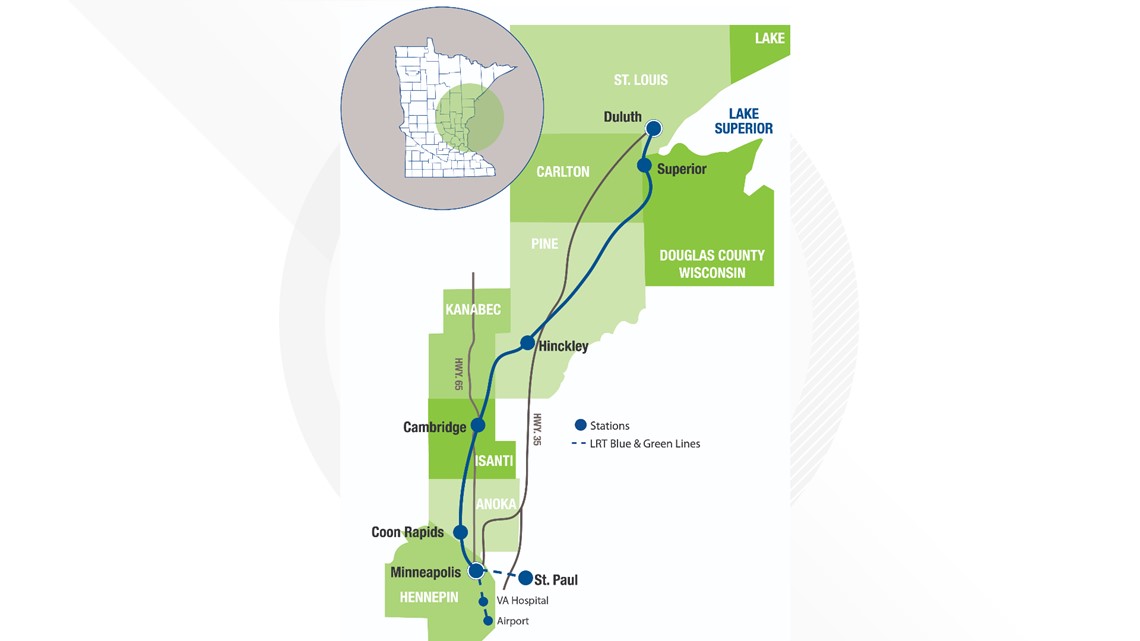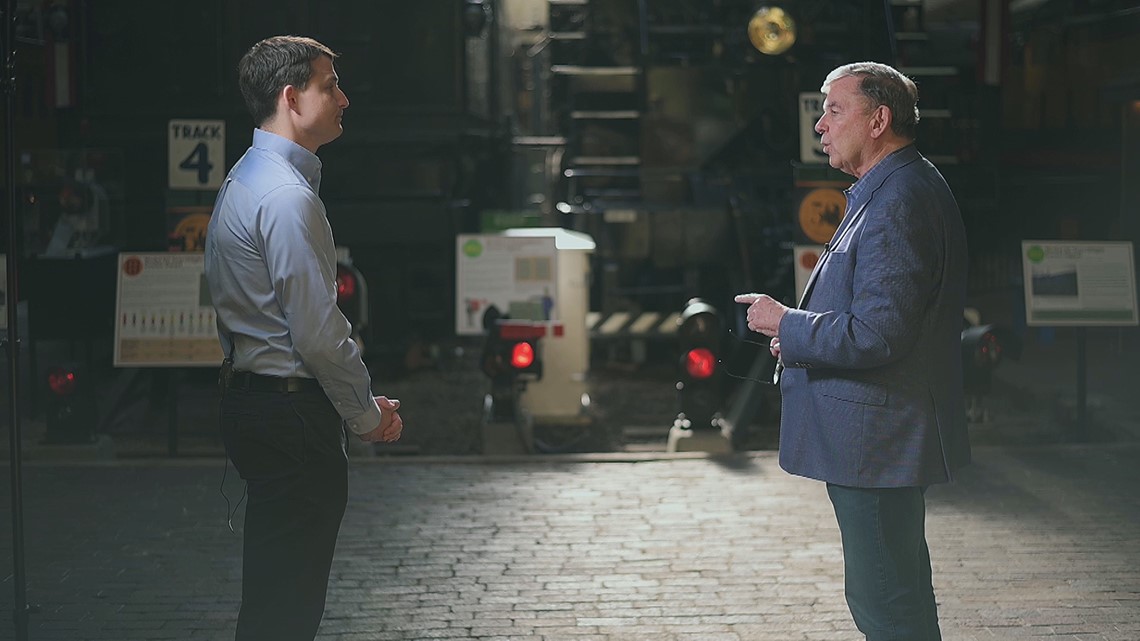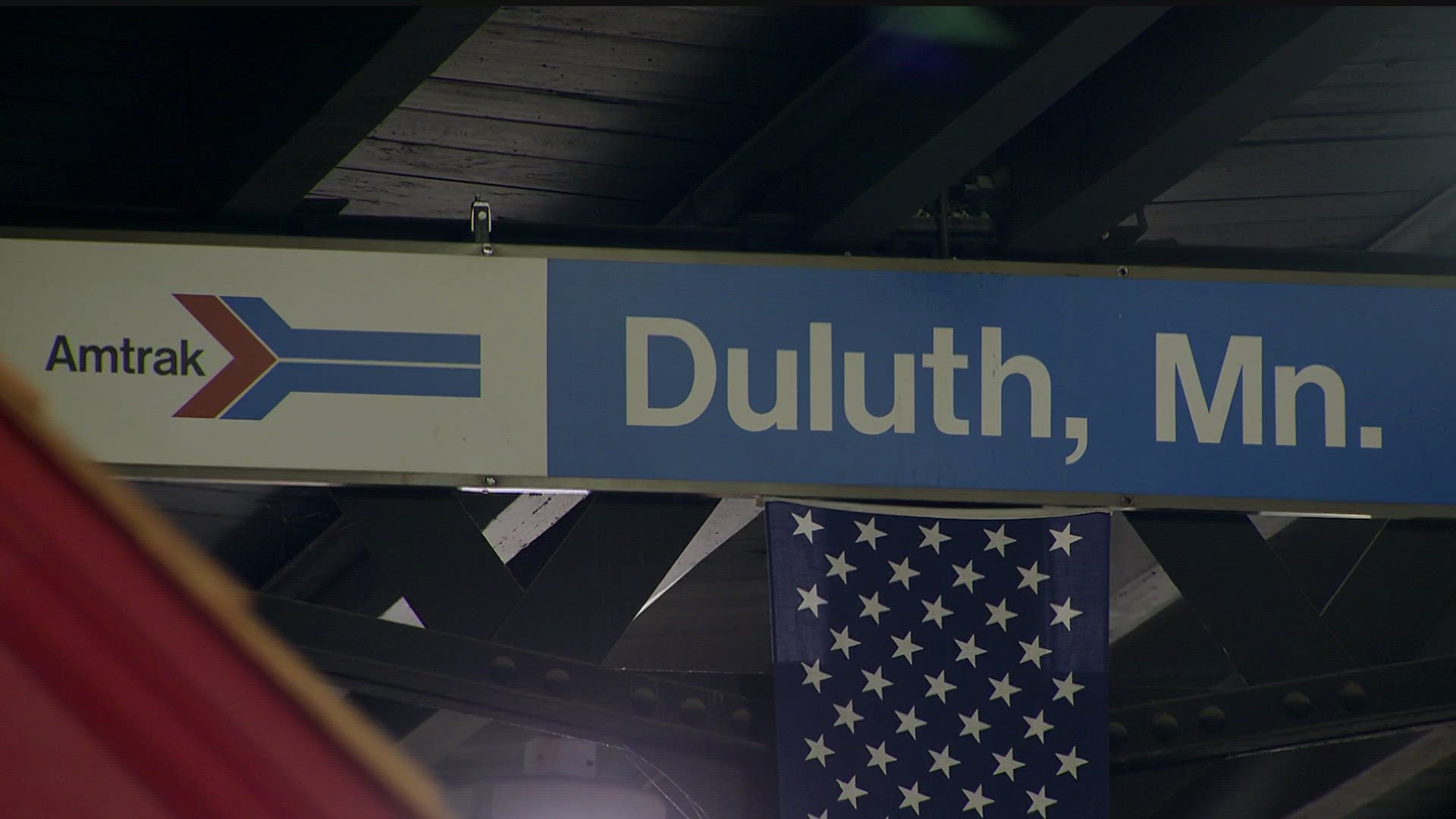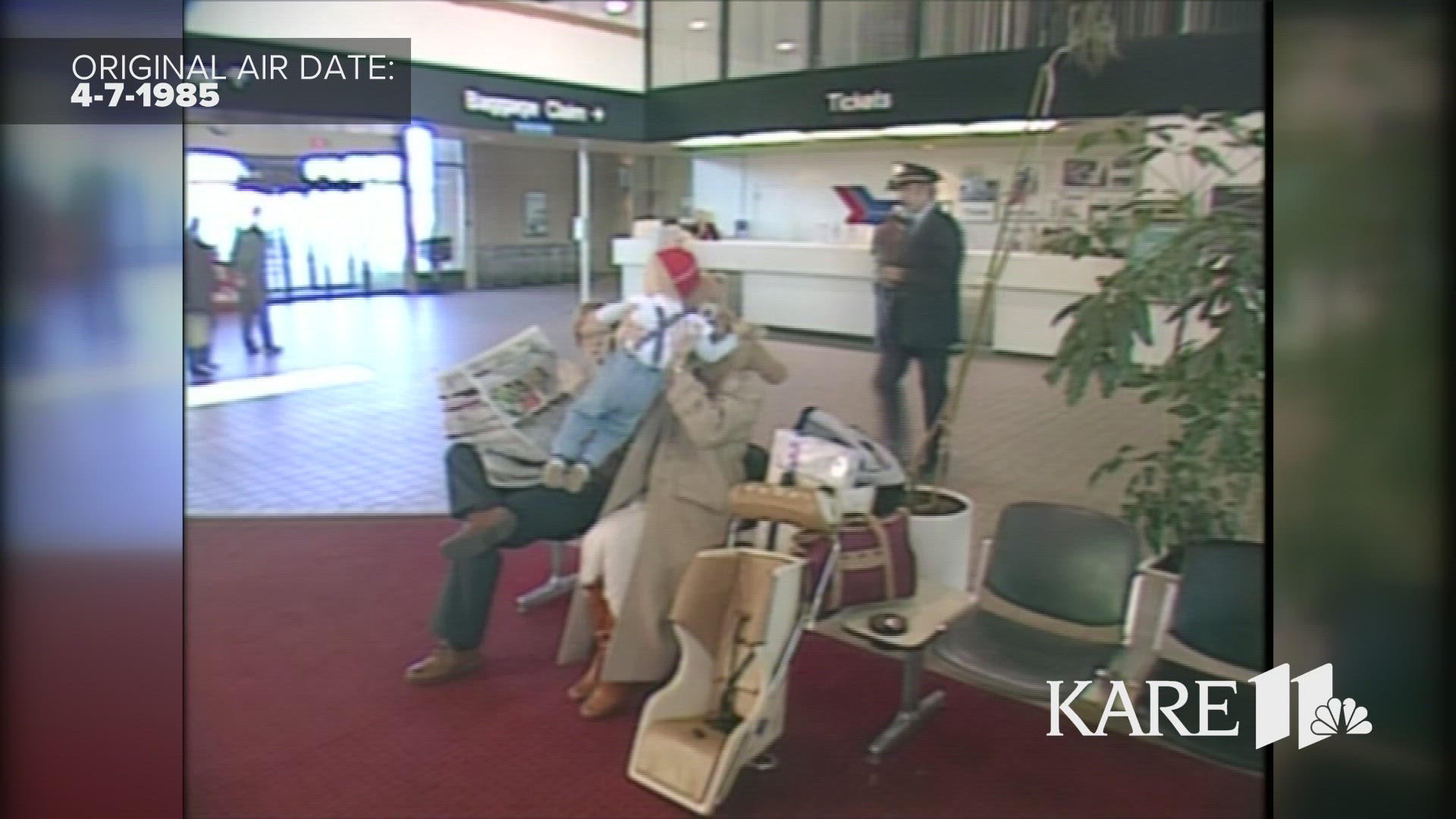MINNEAPOLIS — For the first time in nearly four decades, an Amtrak passenger train between the Twin Cities and Duluth may resume if state lawmakers approve a share of funding during this spring's legislative session.
Known as the "Northern Lights Express," the rail line would follow existing BNSF tracks along a 152-mile corridor, starting at Target Field in downtown Minneapolis and ending in Duluth at the St. Louis County Depot near the shores of Lake Superior. The route would include stops in Coon Rapids, Cambridge, Hinckley, and Superior, Wis., and would take more than two hours to complete.
The train would also operate four times a day round-trip, costing between $30 to $35 each way.
"This is a transportation alternative that will literally change everything," said Ken Buehler, who chairs the technical advisory committee for the project and heads the Lake Superior Railroad Museum. "In Duluth, it's going to have a major impact on the tourism industry. In the Twin Cities, it will become a commuter-lite train from Cambridge and from Hinckley on down into the metro Minneapolis area. It's serving many different customer profiles along the route."


Long stifled by political disagreements at the capitol, funding for the Northern Lights Express may finally materialize in 2023 now that the DFL controls the House, Senate, and governor's office.
Following Tuesday's announcement of a budget framework, DFL leaders in the House and Senate will get to work on various funding proposals for the passenger rail service in the transportation omnibus bill. According to the Minnesota Department of Transportation, the project would cost more than a half-billion dollars, but the federal government would cover 80 percent of the money as long as the state commits to the other 20 percent.
"I'm seeing more excitement for this project," Buehler said, "than in the entire years we've been working on it."
BACK TO THE FUTURE
For most of post-Civil War modern history, passenger trains flowed freely between the Twin Cities and Duluth, starting with the first trip from St. Paul to Duluth on August 1, 1870. After a brief interruption in service during the 1960s, Amtrak operated a train between the Twin Cities and Duluth from 1974 until 1985, but that route ended when the state ran out of money.
Ever since, supporters have been talking about a new generation of passenger rail service between the two major metropolitan areas.
Ken Buehler, for example, recalls meeting with former U.S. Representative Jim Oberstar as early as 2002 about resuming passenger rail service from the Twin Cities to Duluth.
"What has really changed that makes this so wonderfully unique, is that we've learned something in the last three years. We've learned that you can now work where you want to live," Buehler said. "Something like this opens up a whole new region of Minnesota to people who are telecommuting and maybe have to be at their office one, two, or three times a month."


The project has garnered a significant cross-section of support along the 152-mile route. Advocates include several local chambers of commerce, higher education institutions, labor unions, and the Mille Lacs Band of Ojibwe.
Samuel Moose, the commissioner of administration for the Mille Lacs Band of Ojibwe, pointed to the train's potential benefits for Grand Casino Hinckley, a major economic driver located about 2.5 miles east of the proposed Hinckley train stop.
"[Northern Lights Express] is an opportunity to continue those sectors of bringing people to the region, both for us and surrounding partners and businesses," Moose said. "It's a win-win."
At the same time, Moose also said the route could greatly enhance transportation access for members of the Mille Lacs Band of Ojibwe.
"It's a great access for our veterans who may go for health care in either Duluth or down in Minneapolis at the VA. I think it's a great win for them," Moose said. "Transportation is something we struggle with, getting from Point A to Point B. So, I think it's a good fit for us."
Having undergone the necessary environmental reviews, the Northern Lights Express is considered "shovel-ready," according to MNDOT.
That is -- if the funding comes through.
WHAT'S IT GOING TO COST?
Estimates have varied widely in recent weeks, but a spokesperson for MNDOT said Wednesday that the Northern Lights Express project carries a base cost of $544 million. If state lawmakers were to authorize 20 percent of that total ($109 million) this session, they could then unlock the remaining 80 percent of funds ($435 million) through the federal government's "Federal-State Partnership for Intercity Passenger Rail Program." That program uses federal money from the Infrastructure Investment and Jobs Act -- widely known as the "infrastructure bill" -- which passed in late 2021.
After hearings in the House and Senate, DFL lawmakers must work in the coming weeks to find common ground on the exact funding total for the state's share of Northern Lights Express. (The House has proposed a slightly higher dollar amount because leaders in that chamber have offered to fund a new train station in Coon Rapids, which MNDOT says would raise the cost of the project to $592 million overall.) Theoretically, lawmakers could find money for the rail project in either the transportation omnibus bill or the bonding bill.
DFL Sen. Scott Dibble, the chair of the transportation committee, called Northern Lights Express a bargain, considering the fact that Amtrak would run the passenger service on BNSF tracks that already serve commercial freight trains.
"If we were building our own track and purchasing all of our own rolling stock and paying for our own staffing and personnel to run the whole thing, it would be a lot more expensive," Dibble said. "It's hundreds of millions of dollars in benefit -- way more benefit in terms of economic opportunity, economic generation, and avoided pollution, than it will cost."
MNDOT estimates that 700,000 to 750,000 people would ride the Northern Lights Express during the first year of operation and predicts that number could grow to one million annually within two decades.
Based on these initial ridership projections, the state would collect only $12 million per year in revenue from fares compared to $19 million in annual operating costs, although MNDOT notes that "federal grants are available to help pay for the first six years of operation," which "will help reduce the cost to Minnesota while ridership grows."
Sen. John Jasinski (R-Faribault) remains unconvinced.
"I'm concerned. Obviously, the cost is a huge thing," said Jasinski, a ranking minority member on the Senate's transportation committee. "We're already starting off from a proposed deficit already, so we're subsidizing this train, already."
During this winter's hearings in the House and Senate, Republican lawmakers questioned the ridership projections and wondered how many people would actually use the Northern Lights Express to commute to work.
Rep. Shane Hudella (R-Hastings) was among the more vocal opponents of the project.
"Who is going to spend 4.5 to 5 hours of time on a train, plus that work day, to get to a job down in Minneapolis?" Hudella said. "Maybe an incredibly high-paying job, maybe, but my hunch is those folks probably aren't going to take a train down to commute. So, just so many concerns."
Republicans have also pointed to the examples of the Southwest Light Rail project, which has been plagued by delays and ballooning costs, as well as Metro Transit's struggling Northstar line that runs through the northwest Twin Cities metro to Big Lake. Since the pandemic, the Northstar service has lost thousands of riders per day.
"I don't think we have the population density to support [Northern Lights Express]," Jasinski said. "Looking at Northstar and how much we've had to subsidize that… it's just an inefficient use of money."
But project supporters, like Ken Buehler, say the Northstar isn't a fair comparison to the Northern Lights Express.
"We are an intercity passenger train. We're not a commuter train. We're not Northstar," Buehler said. "We're a completely different animal. Northstar would be more successful if it was like us, and went all the way to St. Cloud."
WHAT'S NEXT?
If lawmakers approve state funding this session and unlock the matching federal infrastructure dollars, Northern Lights Express could be operational as early as 2026. Supporters have said they hope to model the service after routes like Amtrak's Downeaster train, which carries tourists daily between Boston and the scenic areas of Maine.
Amtrak representatives say they predict "great demand" for the Northern Lights Express. This summer, Amtrak already plans to expand service between the Twin Cities, Winona, La Crosse, Milwaukee and Chicago.
"We are ready to provide the technical support, to the state of Minnesota, to the folks at the DOT, and the [Northern Lights Express], to bring this over the finish line," Amtrak director of government affairs Derrick James said during a January Senate hearing. "And [we] certainly look forward to having you guys on board our inaugural train to Milwaukee and Chicago, and then after that, we want to do the same thing from the Twin Ports to the Twin Cities."
At the St. Louis County Depot, Ken Buehler said crews may need to build out the existing train station to accommodate increased passenger service to and from the Twin Cities. Currently, the station serves about 110,000 people per year on the North Shore Scenic Railroad.
"What we lost, when Amtrak went away in 1985, was just another means of transportation. What this brings back is another choice," Buehler said. "People are still going to drive their automobiles, and trucks, and people are still going to take the bus. But now they've got another choice. And in America, we thrive on choices."
Watch more local news:
Watch the latest local news from the Twin Cities in our YouTube playlist:


